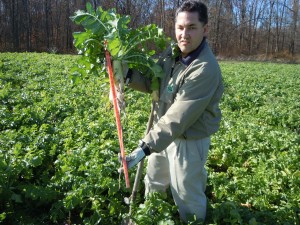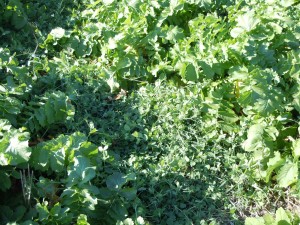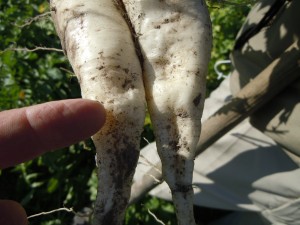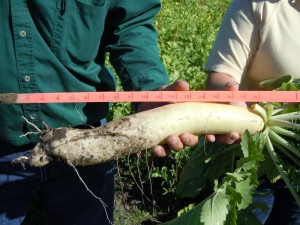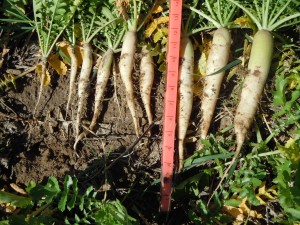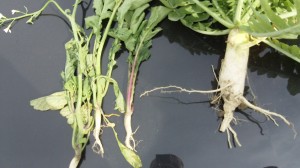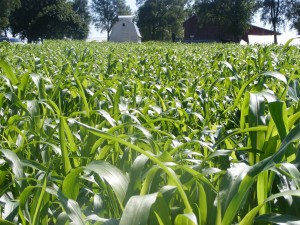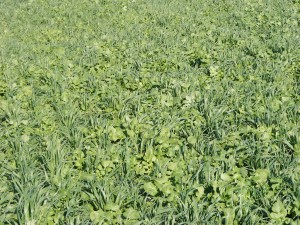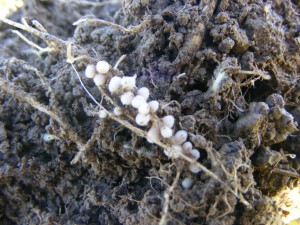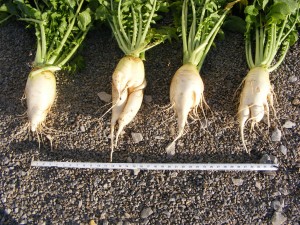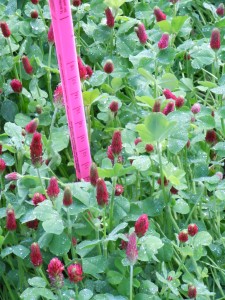I have been visiting a farm in eastern Whitley County Indiana over the past month and have seen a few fields of an Austrian Winter Pea/Radish mixture. These fields were wheat fields that had dairy manure knifed into them after they had been harvested and deep tilled. The video shows what a great stand the farmer got and the growth of the radishes! We found one plant that had a 28+” deep tuber/tap root. That’s how much was in the soil! At 4″ below the soil surface I found where there had been quite a bit of compaction. The radish was “crumpled” or “wrinkled” at the 4″ depth range. Out of the 15 radishes we dug up only one radish had not bored through the compaction layer.
